Master Your Garden Month-By-Month
JANUARY
WHAT TO PLANT
Indoors:
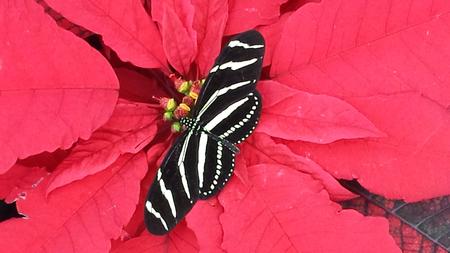
From http://ucanr.edu/blogs/blogcore/postdetail.cfm?postnum=6330
Christmas cacti like to be slightly pot-bound. Re-potting is only necessary about every 3 years. Plants initiate and develop buds and bloom with bright light, short days, and night temperatures from 55-65°F. Flower buds won’t develop if the night-time temperature reaches 70°F. Full sun is beneficial in winter, but bright light during summer months results in plants that are pale and yellowish. Less water is needed during the winter; take care that the soil never becomes waterlogged.
See California Master Gardener Handbook second edition, pp 266-269, “Care of Potted Flowering and Holiday Plants.”
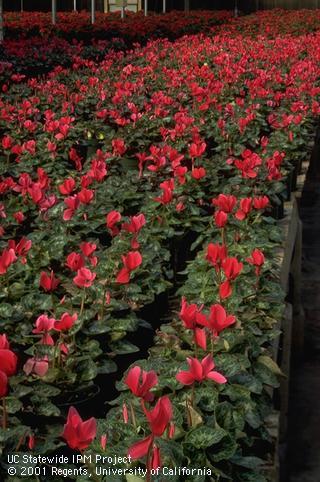
Cyclamen make good houseplants but absolutely thrive outdoors in full sun during cool, wet weather. Inside, they require full sunlight and night temperatures from 50-60°F. Water whenever the soil surface feels dry. Allow the plants to die down after flowering, then re-pot the corm outside. Be sure to leave the top of the corm exposed. Cyclamen are available in vibrant shades of crimson, cranberry, pink and white, cyclamen, making colorful additions to container plantings throughout the winter. Consider red and white shades to decorate for Valentine’s Day and beyond.
From: ucanr.edu/sites/CalaverasCountyMasterGardeners/files/203608.pdf
Camellias and azaleas add lots of color to homes and winter gardens. They are blooming now, so it's a good time to select and buy. Flowers can last up to 6 weeks in the home with bright sunlight and a constant rate of moisture. They will drop leaves readily in low light situations. They can be planted outdoors in a shady garden bed during the summer. Because these plants prefer acid soils, it is helpful to add soil sulfur in the planting hole. (Many sources advise adding sphagnum moss to an azalea/camellia planting mixture, but this is no longer considered a sustainable material. High-acid substitutes are recommended.)
Outdoors:
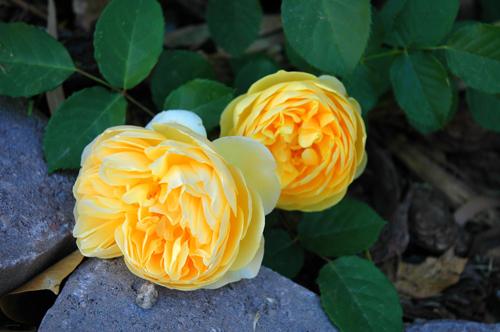
Bare-root roses should be planted in December, when nursery selection is at its best. They are generally less expensive than container-grown specimens, they require less care, and are easier to handle and plant. Avoid bare-root plants that are kept in a sunny location at the nursery—they may be dried out or have premature shoots. Plant bare-root roses the same day they are purchased for best results. See The California Garden Web: Roses for complete cultural information.
Perennials such as foxglove, penstemon, yarrow, and agapanthus can be planted later this season.
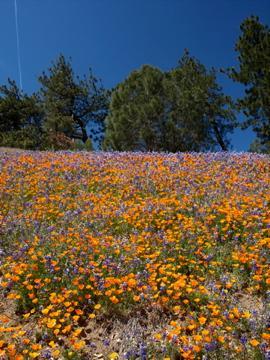
It’s still a good time to plant native wildflowers for spring blooms. The Santa Barbara Botanic Garden for suggested plant species in this area.
Cool-season food crops generally do best with 8 hours of sunlight and 55-75º F temperatures. Continue to plant asparagus, beets, carrots, cabbage family,lettuce, onions, parsnips, potato, radish, spinach, turnips in succession from December through the winter. In January, plant artichokes, horseradish, rhubarb, strawberries, and herbs such bay leaf, borage (can be invasive-keep potted), chives, parsley, rosemary, and French thyme. Visit The California Garden Web for complete information about preparing, planting and caring for home vegetable gardens all season long.
Select and plant deciduous fruit trees now. Visit the UC California Backyard Orchard website for details. California Rare Fruit Growers is another excellent resource for environmentally sound information on the culture of fruit trees and other edible plants.
FEBRUARY
WHAT TO PLANT
Edibles: Sow seeds of beets, celery, carrots, chard, collards, kale, kohlrabi, leeks, lettuce, peas, radishes, spinach and turnips. Plants sets of garlic, onions, and shallots. If you want to grow unusual varieties of tomatoes, peppers and eggplant, start seeds indoors now. Artichoke and asparagus crowns, as well as rhubarb rhizomes, can be dug and transplanted. For information about planting strawberries, check out Growing Berries in Your Backyard.
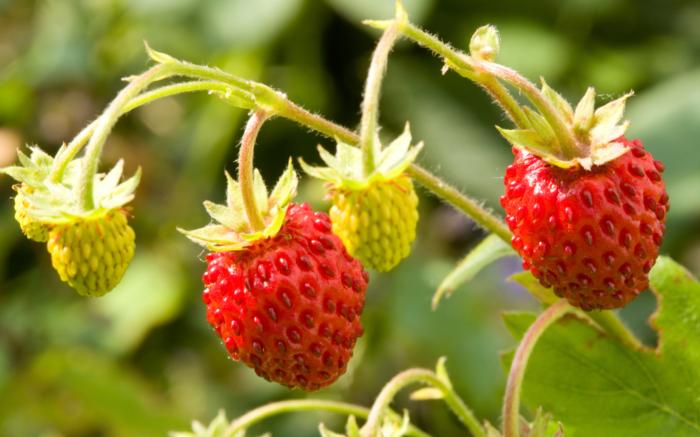
Trees and Shrubs: Continue planting bareroot roses, fruit and nut trees early this month. See “Temperate Tree Fruit and Nut Crops,” in the California Master Gardener Handbook. Berries and grapevines can also be planted now. Select container-grown camellias and azaleas while they’re blooming and re-plant in rich, acid soil.
Ornamentals: Plant seeds of annuals such as alyssum, aster, cornflower, calendula, carnation, coreopsis, columbine, cosmos, delphinium, forget-me-not, hollyhock, impatiens, lobelia, lupine, marigold, pansies, petunia, violas, and native wildflowers. Tip: sweet pea seeds should be sown before Valentine’s Day.
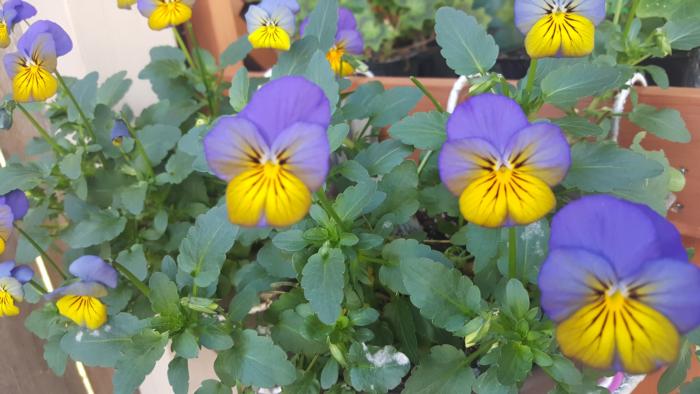
Bulbs: For early spring bloom, plant agapanthus, anemone, amaryllis, caladium, calla lily, dahlia, iris, gladiola, and tuberoses. Tuberous begonias can be planted either indoors in small peat pots, covered with no more than ¼” of soil, or outdoors in filtered shade.
WATERING
February is usually our rainiest month. It’s best to stay out of your garden when the soil is wet, especially around planted areas, to avoid compaction. If necessary, lay down pieces of plywood to walk on instead of directly on soggy ground. Tip: take your houseplants outdoors during the rain for a nice, deep, cleansing soak.
GARDEN TASKS
Pruning: Finish pruning dormant roses, fruit trees, berries, grapevines, and summer and fall-blooming shrubs such as abelia, brugmansia, budleya, salvia and toyon. Remove dead limbs from hydrangeas, but wait until all danger of frost is over before pruning more tender ornamentals to help protect emerging new growth. Deadhead perennial flowers to encourage increased blooms. Cut back perennial ornamental grasses to 4-6” above ground, dig up and divide clumps for transplanting.
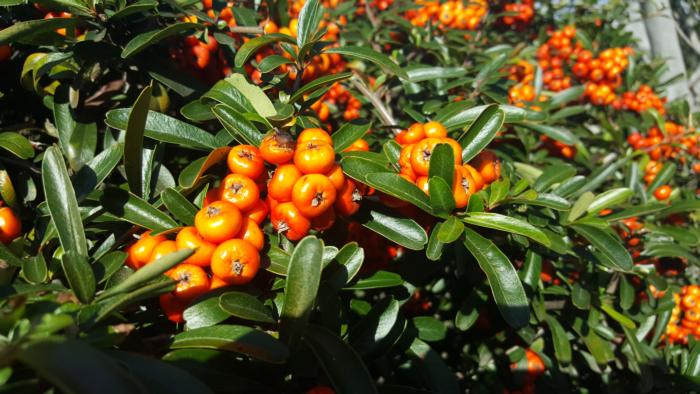
Apply dormant spray to fruit trees after the buds swell but before the blossoms open. Timing is critical to achieve the intended protection from peach leaf curl. See UC IPM Pest Note 7426.
Control snails and slugs with organic bait, but only after removing sources of shelter, food and moisture. See UC IPM Quick Tip. Treat Aphids by spraying with a strong stream of water to remove them from the plant, or treating with non-chemical insecticidal soaps or oils. See UC IPM Quick Tip. Earwigs can damage tender young growth but they are also fierce predators of aphids and other unwanted insects. Trapping in rolled-up newspaper is one of the most effective controls. See UC IPM Pest Note 47102.
Pull weeds now before they can flower and set seed, and while the soil is workable. Winter annual weeds springing up include clover, crabgrass, cheeseweed and purslane. Get rid of them now and they’re gone (at least until next year), while perennials like Bermuda grass, nutsedge, bindweed and oxalis will just keep coming back unless roots are removed intact. Weed Photo Gallery is a helpful tool for weed identification and management.
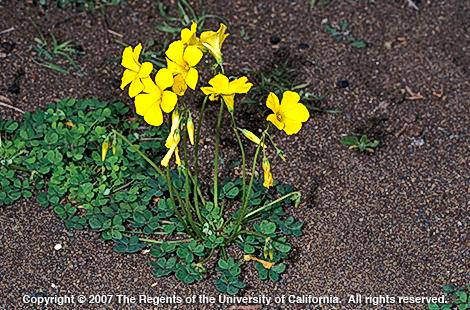
Fertilize groundcover, perennials, shrubs, and trees with organic materials that release nutrients slowly, such as bone meal, cottonseed meal, fish emulsion or well-composted manure. Tip: don’t fertilize right beforeit rains in order to keep the nutrients and/or chemicals from washing away into storm drains and creeks.
Clean and sharpen spades, shovels, hoes, rakes, trowels, hand pruners and loppers in preparation for the busy gardening season ahead. Soak rusted tools in oil for a few hours, scrape with a wire brush or steel wool to remove rust, then sharpen blades with a whetstone or hand file. Tip: cleaning tools after each use and hanging them up in a dry spot will make them work better and last longer.
FYI: The Santa Barbara area is located in Climate Zones 9 & 10 according to the USDA system Plant Hardiness Map and Sunset Zones 21-24 Los Angeles Region Map.
MARCH
Enjoy an extra hour in your garden thanks to Daylight Savings Time!
WHAT TO PLANT
Edibles: You can still transplant artichokes, asparagus, broccoli, Brussel sprouts, cabbage, cauliflower, kale, and rhubarb. At month’s end, seedlings of early variety tomatoes can be planted. Continue sowing seeds of lettuce, peas, radish and spinach. Plant starts of chives, parsley, rosemary, sage, savory, tarragon and thyme. March is a good month to select and plant citrus, also bareroot stone fruit such as cherry, apricot and peach. See “Planting Bare-Root Trees” in the California Master Gardener Handbook.
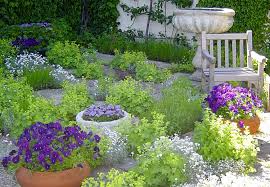
Succulents: Choose from the wide variety of locally-available species that are excellent for firescaping. Most succulents are also extremely easy to propagate, which make them smart choices economically as well as ecologically.
Ornamentals: Despite recent rains, Santa Barbara County remains in a moderate drought, so it’s still a good idea to concentrate on plants with low-water requirements after becoming well-established. Annuals—alyssum, cosmos, geranium (pelargonium), marigold, morning glory, phlox, verbena and zinnia. Perennials—achillea, artemesia, coreopsis, daylily, dianthus, eryngium, lavandula, salvia, santolina, sedum and thyme. Shrubs—dwarf pomegranate, pyracantha, barberry, mahonia (for part-shade), all of which also provide habitat and food for birds. To attract beneficial insects for pest control, try aster, chamomile, coreopsis, cosmos, feverfew, marigold, scabiosa, and yarrow. For more suggestions, see Sunset’s Guide to Beneficial Insects.
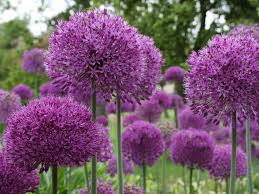
Bulbs, Corm, Tubers: For summer flowers, plant agapanthus, tuberose, tuberous begonia, calla lily, caladium, canna, dahlia, gladiola, and watsonia.
Don’t plant invasive species!
Learn what not to plant at PlantRight
WATERING
Conserve water by irrigating only when soil is dry to the touch. Deep watering forces roots to grow downward where water is more readily available to them. Several inches of mulch around plants, shrubs and trees helps hold in moisture and decreases the need to water as often. Caution: always keep mulch at least 6" away from trunks to avoid promoting root and crown diseases!
GARDEN TASKS
Pruning: Once danger of frost is past, prune any frost damage after buds have developed, which will permit you to easily distinguish healthy tissue from dead branches.
Feed: Fertilize established berry plants, camellias, hydrangeas, roses and turf grass.
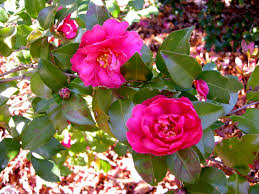
Weed: Begin now, while the weeds are still small and they haven’t yet begun to reseed. If soil has dried out, water the day before weeding—you’ll be very glad you did!
Pest Control: Be vigilant looking for aphids, mealybugs, and white flies. To control, either hose off with strong stream of water from the hose, or apply insecticidal soap. Be sure to check under the leaves, too. Watch for snails and slugs to appear once the weather warms up. TIP: gather the spiky seed pods from liquidambar trees and use them to build a “corral” around any prized plantings you wish to protect—snails and slugs will head in another direction!
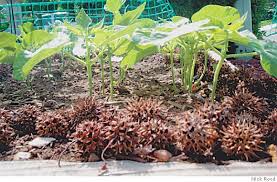
Think ahead to fire season by continually removing debris, weeds, and flammable overgrowth.
Tools: Clean and dry after each use. Put a thin coat of oil on the blades to protect from rust and erosion. Store in a cool, dry place.

FYI: Do you have citrus trees? In 2012, the Asian Citrus Psyllid (ACP) was found in Santa Barbara County for the first time. This insect harbors the bacterium Huanglongbing (or HLB), which is a fatal disease with no known cure that is responsible for destruction of citrus trees worldwide. The only way to control the disease is to learn how to control the pest that carries it. Since at least 60% of Californians have at least one citrus tree on their property, homeowners are the first line of defense against this deadly invasive pest. Learn what you can do to help protect your citrus trees and the California citrus industry. ACP Distribution and Management. Click here for quarantine information ACP Quarantine Boundaries.
APRIL
WHAT TO PLANT
Vegetables: Sow or transplant beets, carrots, celery, kale, kohlrabi, rhubarb. On the coast, continue planting chard, leeks, radishes and spinach. Transplant early varieties of beans, cucumber, and tomatoes. Early tomato varieties that do well in Santa Barbara are Sungold cherry, Better Bush (good for containers), First Lady H Hybrid and Valerie. Heat-resistant varieties of cool-weather crops such as the Wando variety of peas can still be planted, as well as heat-tolerant and bolt-resistant lettuce varieties. This may be the last month to transplant artichokes, asparagus and cole (or brassica) crops like broccoli, cabbage, Brussel sprouts and cauliflower. Unless April is unusually warm, it’s best to wait until next month to put in warm-weather lovers such as corn, cucumbers, eggplant, peppers and squash.
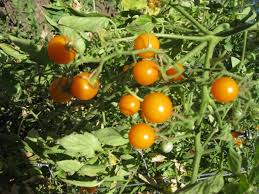
TIP: When choosing tomato plants, note that varieties with VF after the cultivar name are resistant to Fusarium and Verticillium, two common soil-borne wilting diseases that can destroy entire crops of tomatoes and peppers, but can also attack herbaceous plants such as chrysanthemum, asters and dahlias. UC IPM website is an excellent resource for managing these and many other plant diseases.
Herbs: Just about any kind of herb can be planted now. Lavender, marjoram, rosemary and thyme originated in southern France so they thrive in Santa Barbara’s similar Mediterranean climate.
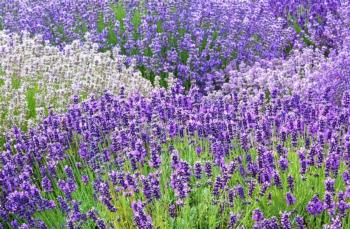
Fruit: Continue planting citrus trees while nurseries still have a good selection.
Ornamentals: Container-grown roses are in peak bloom now, so you can pick the exact flower color you want. Annuals—aster, cosmos, marigold, lobelia, petunia and zinnia. Perennials—coreopsis, salvia, penstemon and CA fuchsia (Zauchneria) species do well during our hot, dry summers.
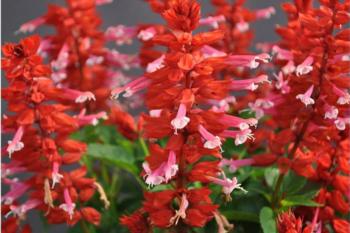
GARDEN TASKS
Prune: Continue to prune any frost damage after buds have developed, which will permit you to easily distinguish healthy tissue from dead branches. Make pruning cuts just above new, outward-facing buds.
Feed: Fertilize trees, shrubs, ground covers, perennials, and other permanent plants.
Mulch: Replenish organic mulches such as grass clippings, bark chips, straw or cocoa bean hulls that may have decomposed over the winter. Keep mulch at a depth of 2-4", depending on coarseness.
Water: Inspect sprinkler systems—check timer batteries, detect and repair leaks, clean out clogged emitters. Consider switching out high-flow emitters for lower-flow versions. Though you’ll need to water more often as temperatures rise, conserve water by adjusting irrigation schedules. Water only when soil is dry to a depth of several inches. When you water, water deeply to encourage roots to grown downward, when moisture is more easily accessible.
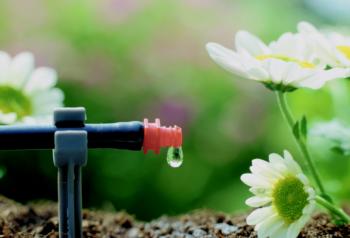
Pest Control: To control powdery mildew, hose off foliage early in the morning to remove fungus spores and allow leaves to dry completely before night falls.
Prepare: Fire season is coming soon so now is the time to call your local Fire Department to arrange a free home fire inspection that includes landscape assessment. The City of Santa Barbara’s Firescape Garden at 2411 Stanwood Drive/Route 192 (corner of Mission Ridge Road) demonstrates a model of reduced fire risk with appropriate plants, design, irrigation and maintenance.
Download the High Fire Area Desirable Plant List from the Santa Barbara Fire Department here

FYI: Do you have citrus trees? In 2012, the Asian Citrus Psyllid (ACP) was found in Santa Barbara County for the first time. This insect harbors the bacterium Huanglongbing (or HLB), which is a fatal disease with no known cure that is responsible for destruction of citrus trees worldwide. The only way to control the disease is to learn how to control the pest that carries it. Since at least 60% of Californians have at least one citrus tree on their property, homeowners are the first line of defense against this deadly invasive pest. Learn what you can do to help protect your citrus trees and the California citrus industry. ACP Distribution and Management. Click here for quarantine information ACP Quarantine Boundaries.
MAY
WHAT TO PLANT
Vegetables: Almost any warm-season edible can be planted now. Avoid planting peas, lettuce and cole crops because they tend to bolt and sunburn with rising temperatures. Plant seeds or starts of beans, corn, cucumbers, eggplant, melon, peppers, tomatoes, and squash. Thin seedlings as necessary. For pumpkins that will be ready to harvest in October, plan carefully and check with local growers who’ve experienced success with growing pumpkins in this area before planting. http://vric.ucdavis.edu/pdf/pumpkin.pdf
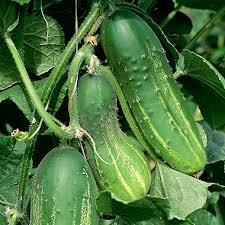
Tomatoes: Stake or cage indeterminate (standard-sized) tomato varieties at planting time. When choosing tomato plants, note that varieties with VF after the cultivar name indicates a resistance to Fusarium and Verticillium, two common soil-borne wilting diseases that can destroy entire crops of tomatoes and peppers. UC IPM website is an excellent resource for learning how to manage these and many other plant diseases. http://ipm.ucanr.edu/PMG/GARDEN/PLANTS/DISEASES/fusariumwlt.html
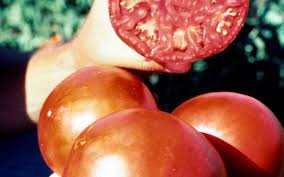
If you plant tomatoes that are not VF varieties and you’ve had problems with these diseases in the past, plant in different areas of your garden. When selecting a planting site for tomatoes, remember that they require at least 6 hours of full sun, and that the roots of nearby shrubs and trees will be competing with tomatoes for water and nutrients. As an alternative, consider tomato varieties (midget, dwarf, patio) that are more compact growers and well-suited to being planted in containers.
Two excellent UC ANR resources: Growing Tomatoes in the Home Garden http://anrcatalog.ucanr.edu/pdf/8159.pdf and Tomatoes http://vric.ucdavis.edu/pdf/TOMATO/tomatoes_HomeGarden.pdf
Herbs: Basil plants can go in now, as well as just about any other kind of herb. Be sure to locate them where they will receive 6-8 hours of direct sun. Herbs such as lavender, marjoram, rosemary and thyme originate in southern France so they thrive in Santa Barbara’s similar Mediterranean climate.
Subtropical Fruit: Avocado, banana, cherimoya, mango and strawberry guava trees can be planted now, and continue planting citrus.
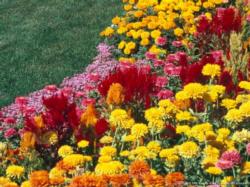
Ornamentals: Annuals for sun—agrostemma (self-seeding), ageratum, alyssum, marigold, nasturtium, sunflower, and zinnia. For shady beds, plant begonia, coleus, impatiens and lobelia. Perennials for summer and fall bloom—alstroemeria (Peruvian lily), coneflower, day lilies, Jerusalem sage, asters, coreopsis, heliotrope, salvia, and penstemon.
TIP: Many California gardeners are expressing renewed interest in adopting environmentally sound practices that reduce and/or eliminate reliance on chemical fertilizers, pesticides and herbicides. Consider making your own home landscape resource-efficient to have a minimum impact on the land we live in. Reduce – Reuse – Recycle!

GARDEN TASKS
Prune: Pinch or deadhead flowering plants to encourage formation of new buds. Remove suckers from rose bushes, grafted fruit trees, and other woody shrubs.
Feed: Continue fertilizing trees, shrubs, groundcovers, perennials, and turf grasses.
Mulch: Replenish organic mulches such as bark chips, straw, or compost that have become depleted over the winter.
Water: Although you’ll need to water more often as temperatures rise, conserve water by irrigating only when soil is dry to a depth of several inches. Use a moisture meter (or your finger) to check for level. Another method: dig soil with trowel and water when the soil crumbles when you try to squeeze it into a ball. Build water basins around trees to prevent run-off. Deep watering will force roots to grow downward, where moisture is more easily accessible.
Weed: Make weeding your garden a daily practice. Young seedlings are easily pulled out by hand or using a hoe. If you wait too long, you’ll have a much harder time digging them up, plus they’ll have more time to rob other plants of valuable nutrients, and they may even reseed!
Control: Hose off foliage early in the morning to remove fungus spores that cause powdery mildew and allow leaves to dry completely before night falls. To remove tomato hornworms, lightly sprinkle plants with water, which will make the worms wiggle, which will make them easier to find and pick off. Avoid overhead irrigation late in the day as many bacterial and fungal diseases thrive in warm, moist, dark conditions and can develop overnight.
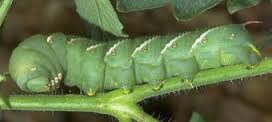
Prepare: Fire season is coming soon so it’s never too early to get ready. Call your County Fire Department to arrange a free home fire inspection that includes landscape assessment. The City of Santa Barbara’s Firescape Garden at 2411 Stanwood Drive/Route 192 (corner of Mission Ridge Road) demonstrates a model of reduced fire risk with appropriate plants, design, irrigation and maintenance. http://www.santabarbaraca.gov/gov/depts/pw/resources/conservation/landscaping/demo/firescape.asp
Download the High Fire Area Desirable Plant List from the Santa Barbara Fire Department here https://www.santabarbaraca.gov/civicax/filebank/blobdload.aspx?BlobID=16481
FYI: Do you have citrus trees? In 2012, the Asian Citrus Psyllid (ACP) was found in Santa Barbara County for the first time. This insect harbors the bacterium Huanglongbing (or HLB), which is a fatal disease with no known cure that is responsible for destruction of citrus trees worldwide. The only way to control the disease is to learn how to control the pest that carries it. Since at least 60% of Californians have at least one citrus tree on their property, homeowners are the first line of defense against this deadly invasive pest. Learn what you can do to help protect your citrus trees and the California citrus industry. ACP Distribution and Management. Click here for quarantine information ACP Quarantine Boundaries.
JUNE
WHAT TO PLANT
If this month offers our typical “June gloom” weather, these gray, often overcast days allow gardeners to make a last planting of warm season crops:
Vegetables: Transplants of cucumber, eggplant, pepper and tomato transplants; seeds of beans, beets, carrots, summer squash and zucchini.
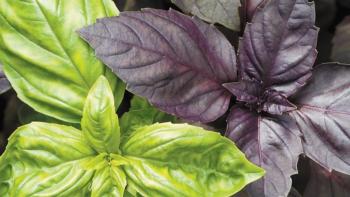
Herbs: Basil, chervil, chives, marjoram, oregano, parsley, rosemary, sage and tarragon.
Ornamentals: Vines such as mandevilla, morning glory, passion flowers, trumpet vine, scarlet runner beans. True fuchsias (species Fuchsia), as opposed to California fuchsia (species Zauschneria or Epilobium), small starts of dahlia, day lily, alyssum, agrostemma, alstromeria, marigold, sunflower, and zinnia.
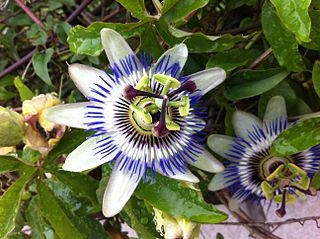
WATER
Although you’ll need to irrigate more often as temperatures rise, conserve water by applying only when the soil is dry. Tip: Dig down 6” into the soil with a trowel and water on the first day that the soil crumbles when you try to squeeze it into a ball. Deep water to force the roots to grow downward where more water is available to them. Hosing off foliage during the early morning hours removes fungus spores such as powdery mildew. If using overhead irrigation, water early enough in the day that foliage can dry out completely before sunset. Remember that bacterial and fungal diseases thrive in warm, moist conditions and can rapidly spread overnight. Water citrus trees deeply every 2-3 weeks during bloom period to minimize June fruit drop. Stop watering established native and Mediterranean plants, including native oaks.
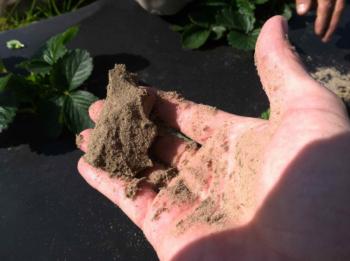
FEED
Feed all actively growing plants except for natives and most Mediterranean species. Feed vegetables regularly throughout growing season with side dressing of compost.
CONTROL
In addition to Powdery Mildew, watch out for snails and slugs, aphids and whiteflies in the June garden. See UC IPM Quick Tips UC IPM for safe and effective control measures at first sign of these pests. Eliminate sources of still or stagnant water as potential sources for mosquito breeding. Flush birdbaths regularly and add larvacide to ponds. See Pest Note Mosquitoes.
TASKS
For deciduous fruit trees, thin the ripening fruit to minimize branch breakage from the weight. Prop up heavily laden branches with wooden stakes. Cover trees in mesh netting to protect ripening fruit from birds and other pests.
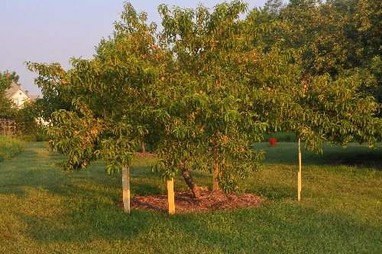
Replenish organic mulch such as compost, wood chips, straw or grass clippings as needed to suppress weeds and retain soil moisture, being careful to keep mulch well away from tree trunks.
As you prepare to pick and enjoy your summer bounty, be mindful of safe harvesting and storage of food crops. Here are two excellent UC ANR resources: Safe Handling of Fruits and Vegetables and Harvest and Post-Harvest.
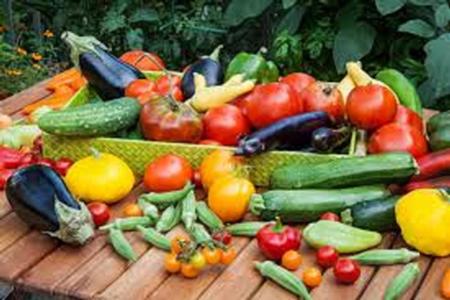
JULY/AUGUST
WHAT TO PLANT
Vegetables: You can still plant beans (for drying) and corn; also tomatoes (especially dwarf varieties), eggplant, peppers, chard, cucumbers, green onions, kale, summer & winter squash. Tip: Transplant in the late afternoon or early evening, water well and mulch around plants. Provide temporary shade as needed from the harsh midday son. Late July into August, sow seeds of carrots and cole crops (broccoli, cabbage, cauliflower). Keep soil moist and shaded until seedlings emerge; gradually increase sun exposure over a week.
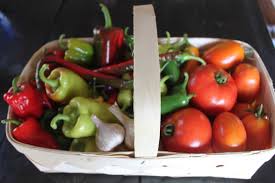
Herbs: Basil, dill, summer savory, heat-loving Mediterranean natives such as lavender and rosemary.
Ornamentals: Try root propagations of azalea, fibrous begonia, camellia, carnation, marguerite, fuchsia, gardenia, geranium, holly, hydrangea, lilac, mock orange, chrysanthemums, verbena. Plant in a mixture of peat/sand/garden soil. For summer-to-fall blooms, plant alyssum, celosia, cosmos, petunia, portulaca, salvia, and zinnia.
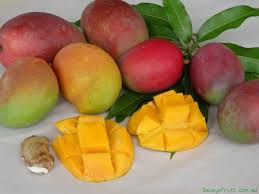
Citrus/Sub-tropicals: Plant kumquat, lemon, lime, orange, avocado, cherimoya, mango. (Mangoes love heat and don’t like fog.)
WATER
Pay special attention to shallow-rooted plants that can wilt and dry out quickly during our hot, dry summers. Tip: Dig soil with a trowel; water on the first day the soil crumbles when you try to squeeze it into a ball. Deep water to force roots downward where more moisture is available. Hose off foliage during early morning hours to remove fungus spores such as powdery mildew. If using overhead irrigation, do so early enough in the day so that foliage can dry out completely before sunset.
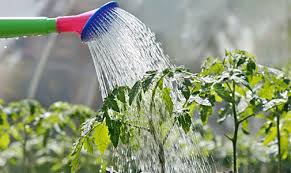
FEED
Feed all actively growing plants except for natives and most Mediterranean species using a balanced fertilizer or fish emulsion roughly every other week for steady growth and crop production. (Remember, too much nitrogen results in less fruit, especially tomatoes.)
CONTROL
In addition to Powdery Mildew, watch out for snails and slugs, aphids and whiteflies in the June garden. See UC IPM Quick Tips UC IPM for safe and effective control measures at first sign of these pests. Eliminate sources of still or stagnant water as potential sources for mosquito breeding. Flush birdbaths regularly and add larvacide to ponds. See Pest Note Mosquitoes.
TASKS
Deadhead flowering plants to promote continued blooms. Pinch back chrysanthemum a final time and fertilize. (Remember, stem tips can be rooted to get more mums!) Pinch back other leggy annuals such as petunias; remove fuchsia seedpods.
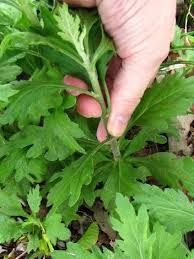
Growing onions or garlic? If foliage hasn’t yet slumped and dried, stop irrigating and bend stalks to the ground. Allow a month or so for them to dry completely before harvesting.
Replenish organic mulch such as compost, wood chips, straw or grass clippings as needed to suppress weeds and retain soil moisture, being careful to keep mulch well away from tree trunks.
Be fire safe—if you haven’t already done so, remove dead limbs and leaves from trees and shrubs; cut grasses down to stubble. Clear gutters of debris. Remove woody vegetation growing against structures.
Harvest ripe crops regularly (at least every other day), to encourage further production. Dispose of any fruit that falls to the ground to eliminate food source for vertebrate pests such as squirrels and rats. Tip: Place ripening melons on aluminum pie pans to separate them from moist soil and prevent rotting. Also reflected heat will allow quicker ripening. Once vines have 3-4 fruits, remove new blossoms to allow each melon to become larger and tastier.
As you prepare to pick and enjoy your summer bounty, be mindful of safe harvesting and storage of food crops. Here are two excellent UC ANR resources: Safe Handling of Fruits and Vegetables and Harvest and Post-Harvest.
SEPTEMBER
WHAT TO PLANT
Vegetables: Seedlings of beets, broccoli, cabbage, cauliflower, carrots, green onions, kale, kohlrabi, lettuce and salad mixes, radishes, rutabaga, spinach, sugar snap peas, turnips. Also artichoke and strawberries plants can go in, as well as onion sets. Note: Veggies planted in the fall need at least 8 hours daily of full sun.
Herbs: Seedlings of chives, cilantro, lavender, lemon grass, parsley, rosemary, winter savory, salad burnet.
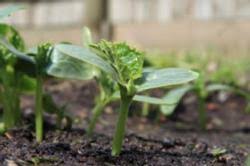
Ornamentals: Annuals—alyssum, calendula, cornflower, forget-me-not, larkspur, sweet pea, viola. Perennials—seedlings of campanula, candytuft, catmint, coreopsis, delphinium, dianthus, penstemon, phlox, salvia, hollyhocks, yarrow. Plant six-packs of fall-blooming mums and asters.
Bulbs—western natives such as Mariposa lily and wild hyacinth, as well as crocosmia, nerine and Sparaxis. Plant freesia and daffodil bulbs now; purchase tulip, crocus and hyacinth bulbs now and chill in refrigerator for 6-8 weeks before planting
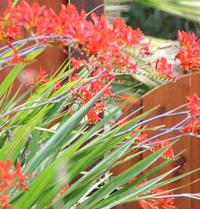
WATER
California natives do not need water as they are still “resting” and awaiting winter rains. Use of mulch in planted beds can be helpful to slow moisture loss due to evaporation, but be sure to keep mulch well away from plant stems and trunks.
ALERT: All mulch is combustible! Studies have shown that composted wood chips have the least hazardous fire behavior, while rubber mulch creates the highest flame height and temperature. For more information, read UC’s “Homeowner’s Fire Mitigation Guide” http://ucanr.edu/sites/Wildfire/
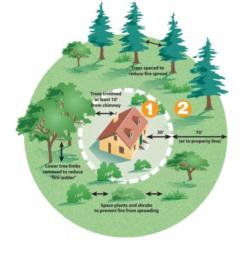
The most critical irrigation period for avocados is from the first flush of growth in the spring until the young fruit reaches a diameter of at least 1 inch. We recommend “Growing Avocados in Ventura County” as an excellent resource for backyard growers. http://ceventura.ucanr.edu/Com_Ag/Subtropical/Avocado_Handbook/
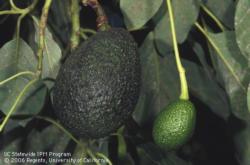
Tip: Consider using a simple soil moisture meter to check the level of water hidden deep in the soil. It’s the only reliable way to accurately gauge conditions well beneath the surface before irrigating, which can be quite different from the soil you can see.
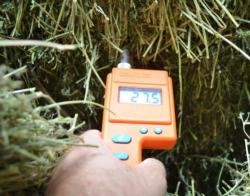
FEED
Most mature citrus require regular fertilization with nitrogen in January or February just prior to bloom. The second application then can be applied in May and perhaps a third in June but avoid late-season fertilization as it may affect fruit quality, delay fruit coloring, and make the rind rough. Dwarf plants or trees in containers with restricted root space may require less fertilizer. For more on citrus culture, visit http://homeorchard.ucanr.edu/Fruits_&_Nuts/Citrus/
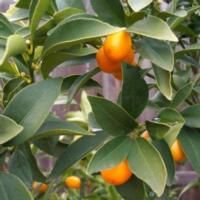
CONTROL
Look out for spider mites and white flies, which can be particularly evident during the warm days and nights of this transitional month. For more information on controlling these and other garden pests, visit http://ipm.ucanr.edu/PMG/menu.homegarden.html
TASKS
Oleander, lantana and bougainvillea can be pruned this month so they’ll have time to recover before winter. Look for many non-native plants to spring back to life in the slightly cooler weather
Clean up fallen fruit underneath trees to prevent disease contamination and to remove food sources for vertebrate pests. Most dropped fruit can be composted, except for citrus, which should especially be avoided in worm bins.
Remember, September is the best time of year to plant anything and everything in Santa Barbara County, so get out in your garden and start planting today!
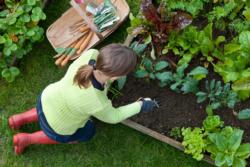
OCTOBER
WHAT TO PLANT
Vegetables: Transplants of artichokes, broccoli, cabbage, cauliflower, strawberries. Sow seeds of leafy greens, beets, carrots, celery, chard, garlic, leeks, onions, peas, radish, and turnips. For more information, see California Master Gardener Handbook 2nd edition, Chapter 13 – Home Vegetable Gardening, pp. 337-414. Try growing your own potatoes!
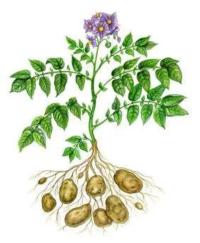
Herbs: Chives, cilantro, parsley, tarragon, sage, rosemary.
Ornamentals: Chrysanthemums for instant fall color.
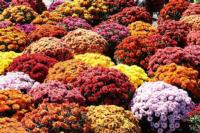
This is a great month to plant California natives: Island Bush Snapdragon, Ceanothus, California Poppy, Dana Point Buckwheat, Douglas Iris, Matilija Poppy Bush, Sages, Toyon, and others. Visit the nursery at Santa Barbara Botanic Garden now during their fall plant sale for wide selection of native plants best suited for our area. California Native Plant Society is another excellent source of information about selecting and growing natives.
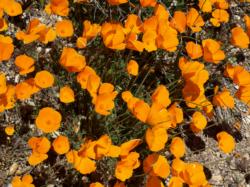
Annuals: Calendula, cornflower, forget-me-not, Iceland poppy, larkspur, petunia, sweet pea, primrose, viola.
Perennials: Campanula, candytuft, coreopsis, delphinium, dianthus, penstemon, phlox, salvia, hollyhocks.
Bulbs: Narcissus, daffodils, tulips, tritonia, watsonia.
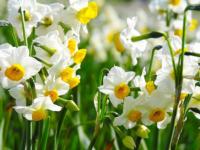
WATER
This month completes the transition from our warm to cool season. Shrinking daylight hours and cooler nights shorten duration of light and warmth, which also decreases plants’ water needs. October also brings increased possibility of rain at just the right time, when California native plant species are eagerly awaiting a long, deep, drenching soak.
When watering new seedlings, do so in the morning to allow plant foliage to dry out completely during the day, which will discourage the introduction of insect pests and disease.
Even during rainy periods, we can have extended dry spells when temperatures are warmer than usual and the dry, hot Santa Ana winds blow in. Watch plants closely during these periods and water as needed if plants show any signs of wilting.
Remember, newly planted shrubs, transplants and even drought-tolerant natives will need regular watering until well-established. After the first 6-12 months, water can slowly be reduced for natives.
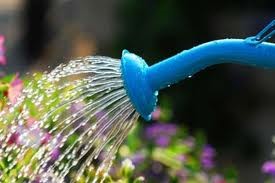
FEED
This is the final fall month of fertilizing most permanent plantings until springtime. Trees, shrubs, vines and groundcovers can all benefit from an all-purpose amendment. Work fertilizer lightly into the soil surface, at the dripline of a tree canopy, and water deeply.
Be sure to mulch before the rains start, to capture the moisture, but careful to keep mulches away from plant stems and tree trunks.
CONTROL
Bagrada bugs are invasive pests that were first discovered in Santa Barbara County in 2012. They are a type of stink bug that attacks various vegetable crops, weedy mustards, and ornamentals such as sweet alyssum, stock, and candytuft. Begrada bugs are especially devastating to young seedlings and leafy mustard greens. Hosing off plants and spraying with mineral oil and bit of dish soap seems to deter them for a while, although there are other chemical deterrents available. UC IPM Pest Note - Bagrada Bug
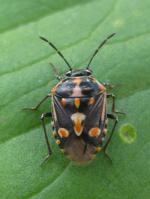
The best method of controlling powdery mildew is prevention by planting in full sun, avoiding susceptible varieties, following good cultural practices. Fungicides may be indicated for ornamental species such as rose and crape myrtle. UC IPM Pest Note- Powdery Mildew on Ornamentals Look for mildew-resistant varieties of cucumbers, cantaloupe, cole crops, peas, melons, squash and pumpkins. UC IPM Pest Note-Powdery Mildew on Vegetables
TASKS
Dig up summer bulbs of canna, dahlia and gladiolus once the foliage has dried out. Brush off any excess soil and store in sawdust about 60°F in low humidity.
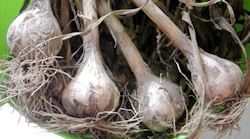
NOVEMBER
WHAT TO PLANT
Vegetables: Artichokes, beets, carrots, leafy greens, onion sets, parsnips, peas, radishes, Swiss chard, turnips. If you’re considering growing brassicae (i.e. broccoli, cabbage, cauliflower, etc.), please refer to the “Control” section in October’s Gardening Guide for information on the Begrada bug—a common pest of many vegetable crops, including brassicae and leafy mustards.
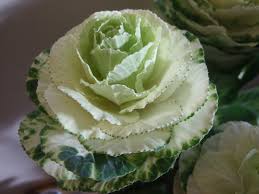
Check out this helpful guide to planting White Potatoes from the UC Davis Vegetable Research and Information Center.
Strawberries are best planted during the first half of this month, before temperatures drop. Find everything you need to know about Growing Berries in Your Backyard on The California Garden Web.
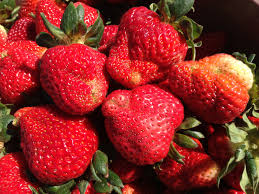
Herbs: Chives. Marjoram, oregano, parsley, rosemary, sage, savory, thyme. They may not look their best until next spring, but planting them this early allows them to become established with the onset of winter rains.
Ornamentals: Continue to plant California natives during the first half of this month. This is also a good time to sow California wildflower seeds. Be sure to visit the Garden Growers Nursery at the Santa Barbara Botanic Garden for the best native plant specimens and great ideas about gardening with native plants in your own yard.
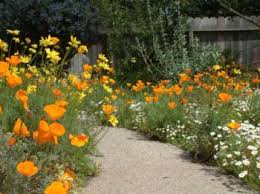
Annuals—Calendula, cornflower, pansies, primrose, sweet alyssum, snapdragon.
Perennials—Nemesaia, godetia, schizanthus.
Bulbs—Amaryllis, anemone, daffodils, Dutch iris, freesia, gladiolas, lilies, ranunculus, trotonia, watsonia. Nursery selection should be good this month.
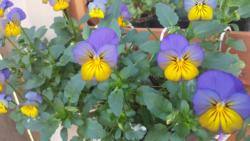
WATER
As the weather cools and daylight shortens, adjust watering schedule accordingly by watering less frequently. Keep in mind, however, even during rainy periods we can have extended dry spell, and sometimes the weather can even be quite warm with hot Santa Ana winds. Make sure that plants are adequately watered during such unusually high water demand.
Fire remains a threat in the foothills and mountains of Santa Barbara County. Keep green spaces around homes and out buildings well-watered this month.
Tune up irrigation system by identifying problems such as leaky valves, correcting spray adjustments, un-clogging drip emitters, and guarding against excessive run-off or puddling.
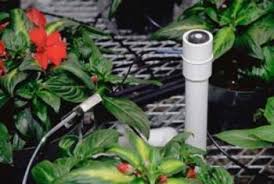
CONTROL
While insect populations should be decreasing with the onset of cold weather, watch out for snails and slugs; set out bait as needed. Dislodge aphids and whiteflies with blasts of water. Floating row covers can be used over vegetable seedlings in the cabbage family to discourage cabbage loopers. If infestations occur, BT (Bacillus thuringiensis) may be used to kill larvae. Follow instructions in container carefully.
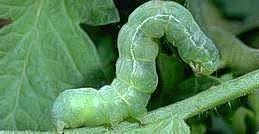
TASKS
- Gather fallen leaves for compost.
- Turn soil to expose verticillium and fusarium wilt—fungi that infect tomatoes.
- Stake newly planted trees to protect from winter winds.
- Stop fertilizing roses in preparation for pruning next month.
- Cut ornamental grasses to the ground when they show new growth.
- Divide clumping plants such as agapanthus, day lilies, Shasta daisy, iris.
- Mulch to control mud run-off during the rains.
HARVEST
Pumpkins are ready to harvest once the connecting vines are dry and the rind is hard. Leave a 2” stem attached when cutting the pumpkin from the vine.
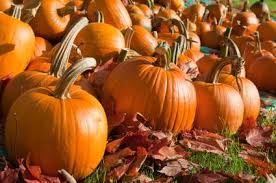
EVERYBODY THINK RAIN!!!

